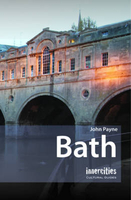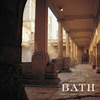-
Home
-
Contributors
-
International
-
Account
-
Information
More From Contributor
- brilliantly disengaged from its positions on the Saar, wheeled 90 degrees & marched northwards faster than any thought possible
- the defense of Bastogne & victory in the Ardennes was one of the greatest feats of American arms in the European Theatre. This title in the Past & Present series looks at the encirclement, siege, & relief with then & now photographs; specially commissioned aerial photos, & a wealth of detail. ...
- Mountain Map” series also listed on our website. Each 1:50, 000 topographic survey map covers an area of 37.5 x 40km. The maps have contours at 5 metre intervals, plus relief shading & graphics for rocky outcrops & boulders. Further graphics and/or colouring show different types of land use or vegetation (forests, arable l&, orchards, marshes, peat bogs, etc). An unusual feature of this survey is the colouring indicating buildings below or above two storeys high & “leisure/holiday homes”. The maps indicate privately maintained roads & include all other information expected of topographic survey at this scale. The maps have a 1-km UTM grid, plus latitude & longitude lines 5’ intervals. Map legend
Includes:: English. For coverage of the country’s most visited hiking areas in central & northern Sweden please see Lantmäteriet’s Mountain Map series, listed separately on our website. ...
Includes:: various street directory entries: on the 1883 map from Kelly`s 1902 directory including The Circus, Gay Street, High Street, Milsom Street, New King Street, Queen Square & Southgate Street. The 1883 version is from the beautiful h&-coloured 1st Edition. About the Alan Godfrey Editions of the 25” OS Series Selected towns in Great Britain & Ireland are covered by maps showing the extent of urban development in the last decades of the 19th & early 20th century. The plans have been taken from the Ordnance Survey mapping & reprinted at about 15 inches to one mile (1:4, 340). On the reverse most maps have historical notes & many also include extracts from contemporary directories. Most maps cover about one mile (1.6kms) north/south, one & a half miles (2.4kms) across; adjoining sheets can be combined to provide wider coverage.FOR MORE INFORMATION & A COMPLETE LIST OF ALL AVAILABLE TITLES PLEASE CLICK ON THE SERIES LINK. ...
Includes:: various street directory entries: on the 1883 map from Kelly`s 1902 directory including The Circus, Gay Street, High Street, Milsom Street, New King Street, Queen Square & Southgate Street. The 1883 version is from the beautiful h&-coloured 1st Edition. About the Alan Godfrey Editions of the 25” OS Series Selected towns in Great Britain & Ireland are covered by maps showing the extent of urban development in the last decades of the 19th & early 20th century. The plans have been taken from the Ordnance Survey mapping & reprinted at about 15 inches to one mile (1:4, 340). On the reverse most maps have historical notes & many also include extracts from contemporary directories. Most maps cover about one mile (1.6kms) north/south, one & a half miles (2.4kms) across; adjoining sheets can be combined to provide wider coverage.FOR MORE INFORMATION & A COMPLETE LIST OF ALL AVAILABLE TITLES PLEASE CLICK ON THE SERIES LINK. ...
- stylish shops & restaurants, interesting galleries & museums, & the feel of a lively city with its historic past informing an exciting present. It is available in four languages. ...

Bath
springs. Then in the eighteenth century, great men such as Beau Nash the Master of Ceremonies and John Wood the architect transformed Bath into the grand Georgian city which we know today. Writers such as Henry Fielding and Jane Austen, and artists such as Thomas Gainsborough, settled in Bath.John Payne reflects on the diversity of the modern city, where industry, sport and shopping take their place alongside tourism and heritage. He considers the continuing importance of religious faith in the city and the contribution to Bath`s cultural life made by its two universities and the many festivals, of which the winter Literature Festival and the springtime Bath International Music Festival are just two. Like all cities, Bath changes through time, and this book looks at recent
developments such as the superb new spa centre, Thermae Bath Spa, and the modernist extension to the Holburne Museum of Fine Art. An insider account that goes beyond the well-trodden city centre, it includes Bath s attractive urban villages, such as Weston (a favourite walk of Jane Austen) and Combe Down with its stone quarries and Jewish burial ground.
This page now acts as a permanent archive for this product. Add more information using the comments box below to ensure it can still be found by future generations.
Use our search facility to see if it is available from an alternative contributor.
- Availability: Out Of Stock
- Supplier: Stanfords
- SKU: 9781904955931
Product Description
Bath, Queen of the West, is internationally famous as one of England`s oldest & most beautiful cities. The picturesque setting in the Avon valley, surrounded by green hills knit town & country together. The hot mineral springs welling up from deep within the earth have given it unique advantages as a health & leisure resort. The Romans called the city Aquae Sulis, & below the modern city are the important Roman Baths, one of England`s top tourist attractions. In medieval times a great abbey grew up here, a centre of scholarship as well as religion. Bath was an important Cotswold weaving centre before becoming a great Georgian spa city. As taking the waters became an increasingly attractive leisure activity for visitors, a number of charity hospitals grew up around the hot springs. Then in the eighteenth century, great men such as Beau Nash the Master of Ceremonies & John Wood the architect transformed Bath into the grand Georgian city which we know today. Writers such as Henry Fielding & Jane Austen, & artists such as Thomas Gainsborough, settled in Bath. John Payne reflects on the diversity of the modern city, where industry, sport & shopping take their place alongside tourism & heritage. He considers the continuing importance of religious faith in the city & the contribution to Bath`s cultural life made by its two universities & the many festivals, of which the winter Literature Festival & the springtime Bath International Music Festival are just two. Like all cities, Bath changes through time, & this book looks at recent developments such as the superb new spa centre, Thermae Bath Spa, & the modernist extension to the Holburne Museum of Fine Art. An insider account that goes beyond the well-trodden city centre, it
Includes:: Bath s attractive urban villages, such as Weston (a favourite walk of Jane Austen) & Combe Down with its stone quarries & Jewish burial ground.
Reviews/Comments
Add New
Intelligent Comparison
We couldn't find anything!
Perhaps this product's unique.... Or perhaps we are still looking for comparisons!
Click to bump this page and we'll hurry up.
Price History
Vouchers
Do you know a voucher code for this product or supplier? Add it to Insights for others to use.


 United Kingdom
United Kingdom
 France
France
 Germany
Germany
 Netherlands
Netherlands
 Sweden
Sweden
 USA
USA
 Italy
Italy
 Spain
Spain











 Denmark
Denmark